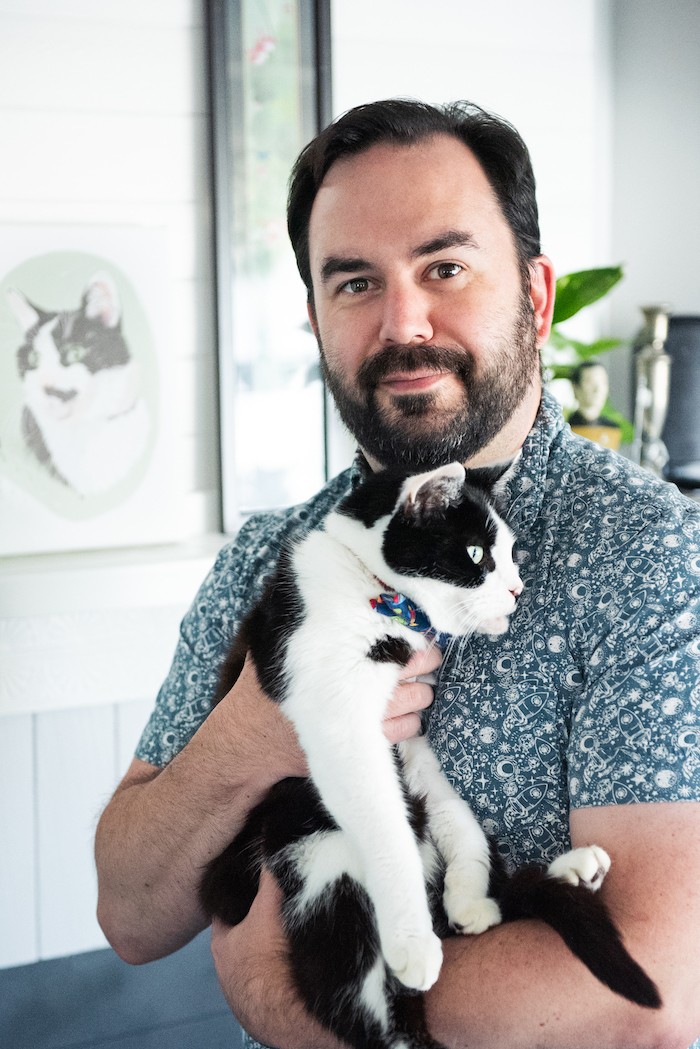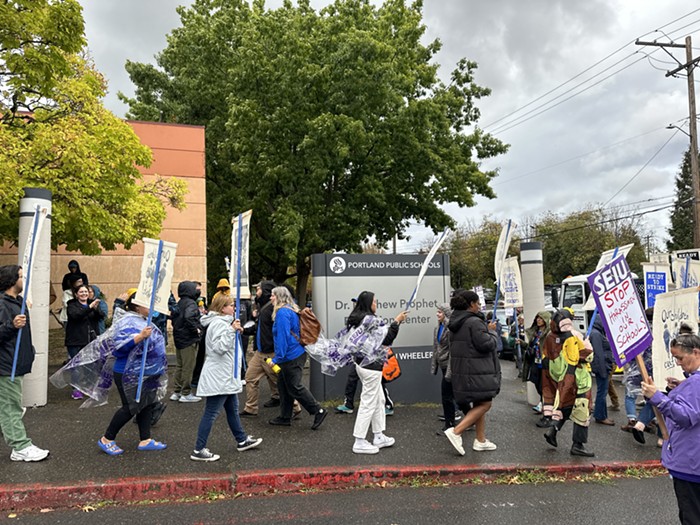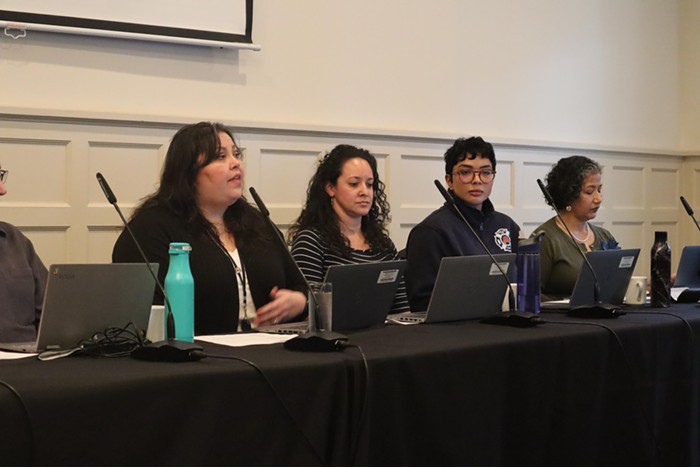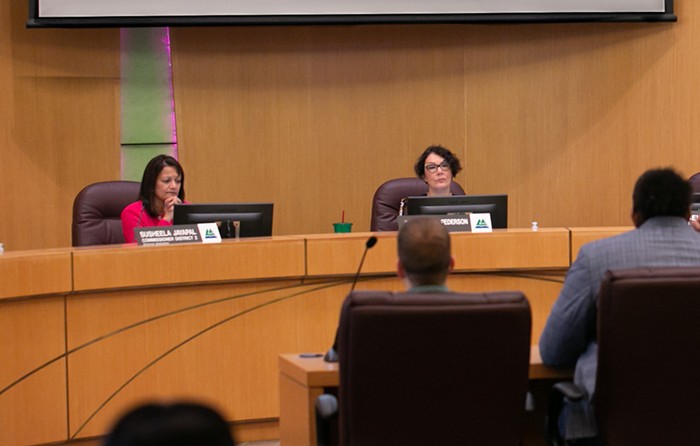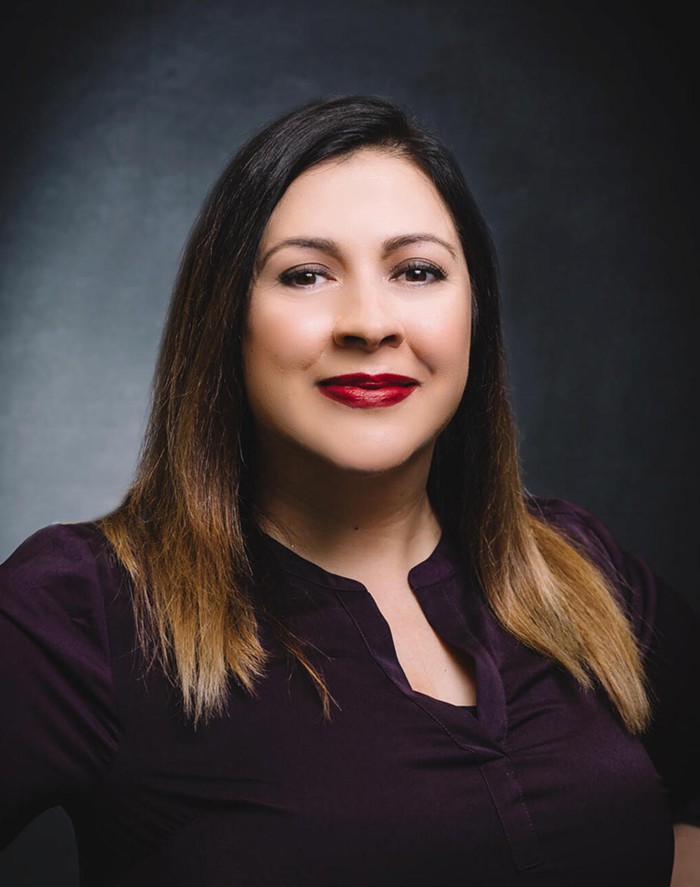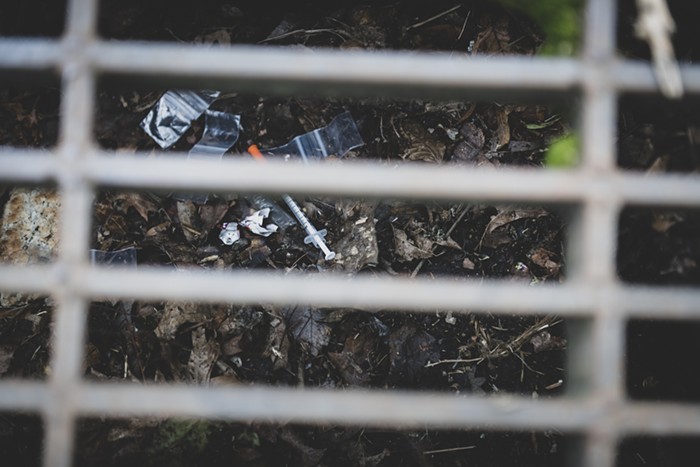The corner of SW 2nd and Couch buzzes with the sound of saws and hammers. The Rich Block building has stood on the corner for over 100 years—now developers are transforming the historic space into housing units they hope will attract the kind of renter more familiar to the Pearl District than Old Town.
The challenge Old Town faces with new development like the Rich Block is whether the neighborhood can develop without excluding low-income people who currently live there. Northwest Portland has been in the process of gentrifying for decades, but Old Town has seen less of a makeover than the Pearl or Nob Hill. The Rich Block could change that.
Originally built as a railroad hotel in the early 1900s, the Block was previously occupied by homeless services nonprofit Central City Concern and, last year, the building's empty storefronts were used as a set for fantasy-cop show Grimm (they painted the windows to depict fake shops such as "Mom Jeans"). These days, the low-income blocks around the building are hedged in by the increasingly chic downtown and Pearl. Over a quarter of the 4,400 housing units in the area north of Burnside and east of 12th Avenue are either public housing (like Section 8 and publicly run single residency occupancy hotels) or low-income housing.
By the end of summer, though, the Rich Block will change the vibe of the immediate area. In September, the 34-unit Modern Rich Apartments will open above new, real-life retail space. The units will be small (200 to 350 square feet) and marketed to young professionals, with 25 percent at market-rate prices and 75 percent reserved for people making 60 percent or less of median income (which is about $50,400 for a single person). Even with construction unfinished, several of the units have already been rented.
"We think Old Town has enough very low-income housing. We're interested in helping move Old Town to more of a mixed income situation," says Julie Garver, housing development director for block developer Innovative Housing. "We're going for a chicer, younger demographic; a young, downtown worker who really enjoys the energy of Old Town and the club scene and everything it offers."
Garver radiates optimism about the project.
"This is definitely going to be an area to watch," she said, "with OCOM [the Oregon College of Oriental Medicine] moving in down the street and businesses transitioning... you're going to get a sort of energy that you wouldn't find in the Lloyd District or the Pearl. I think it's going to be filled with creative people looking for a good value."
The new development will contrast greatly with its neighbors. While the area has a strip of pricey nightclubs that attract those young professionals and bachelorettes, census data shows that over 26 percent of the neighborhood's population lives in poverty.
"Vacancies are very low right now," said Shelley Marchesi, director of public affairs for Home Forward, which manages Portland's public housing. The trend of turning Old Town into a place that's more like the rest of downtown is part of local developers' larger vision for the area. In a 2007 interview with the Daily Journal of Commerce, Anne Naito-Cambell of the Bill Naito Company summed up the sentiment: "It's a great opportunity for growth, this is the last area really in downtown that is aching for development."
"It's bittersweet," says Israel Bayer, the executive director of homeless-focused newspaper Street Roots. "I think that there's no question that we're the last bastion of the downtown core of people who are low income and experiencing poverty. With the development of the Pearl, people experiencing homelessness are squeezed more and more, and don't have places to be, to exist."
Nevertheless, Bayer is hopeful that Old Town can rise to the occasion of becoming a genuinely mixed-income area. "There could be a time where different groups are priced out of the neighborhood—but I think overall, there's a feeling that this neighborhood's dedicated, regardless of what happens economically, to being a place where we can serve people experiencing poverty."

